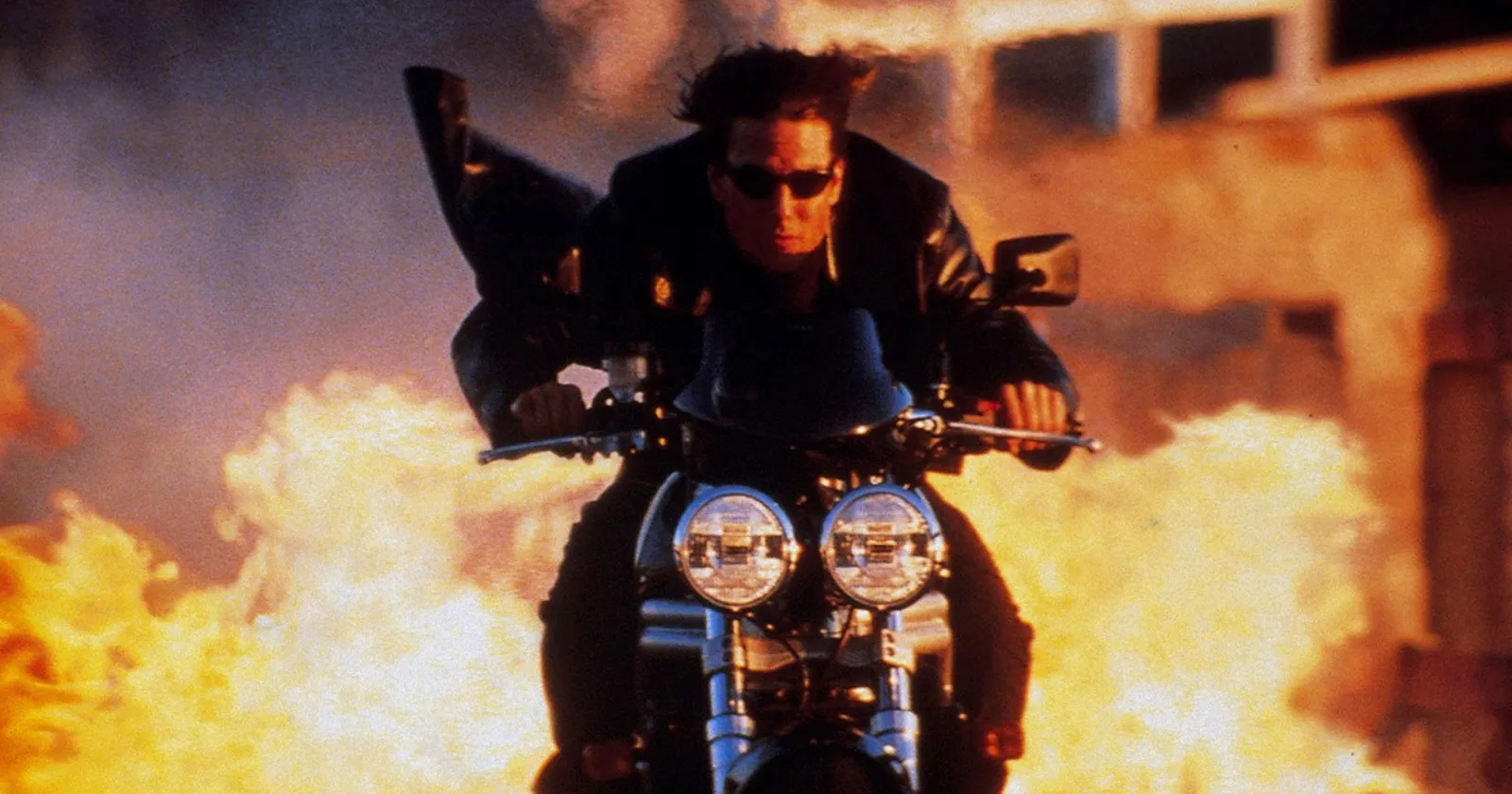With an over-the-top soundtrack, scenic globetrotting, and a relentless commitment to John Woo’s vision, Mission: Impossible II is an outlier in every way. It may be the least essential Mission: Impossible movie, but it’s far from disposable. In a franchise that has evolved into one of the most reliable action brands in cinema, this film stands as an ambitious detour. Tom Cruise returns to star as IMF agent Ethan Hunt.

‘Mission: Impossible II’ Movie Review
Mission: Impossible II (2000) is undoubtedly the most idiosyncratic installment in the Mission: Impossible franchise, and while it might be the weakest entry overall, it’s also the most stylistically bold. Directed by John Woo, known for his balletic action and operatic flourishes in films like Face/Off and The Killer, this sequel takes a sharp turn from the grounded espionage of Brian De Palma’s original Mission: Impossible (1996), opting instead for glossy spectacle, slow-motion standoffs, and an almost mythic sense of cool.
Tom Cruise returns as IMF agent Ethan Hunt, now with longer hair and an even stronger penchant for stunts, racing motorcycles and diving through explosions like a rock star spy. The plot follows Ethan as he’s tasked with retrieving and destroying a deadly genetically engineered virus called Chimera, which has been stolen by rogue former IMF agent Sean Ambrose (played by Dougray Scott). With tech expert Luther Stickell (Ving Rhames, The Instigators) by his side once again and new recruit Nyah Hall (Thandiwe Newton), a skilled thief and Ambrose’s former lover, Ethan races across Spain and Australia to stop a global bioterrorism threat.
There’s a lot of intrigue on paper here, but the story is mostly just a canvas for Woo’s high-octane action style. Doves fly in slow motion. Guns are fired mid-air during motorcycle duels. Sparks, wind, and flames seem to be permanent cast members. It’s melodramatic, excessive, and absolutely committed to the bit. But that’s also where the film starts to polarize. The action choreography is often more concerned with visual flair than narrative momentum, and the emotional core—especially the romance between Ethan and Nyah—never quite feels earned.
Still, Mission: Impossible II isn’t a bad film. In fact, it’s arguably the most fascinating detour in the franchise. Every Mission: Impossible movie has felt like a director’s playground, and here, Woo takes that freedom and cranks every dial to eleven. The end result is deeply flawed but uniquely stylized. While it lacks the tight suspense of De Palma’s original or the clever pacing of Brad Bird and Christopher McQuarrie’s later entries, it has a chaotic charm that has grown more appreciated over time.
Tonally, it’s closer to a music video or a fever dream than a spy thriller—less Tinker Tailor Soldier Spy, more Fast and Furious: Spy Edition. But in that lies a kind of weird, specific joy. If you catch it at the right age, or the right mood, it’s cool in the way only early-2000s blockbusters can be. It doesn’t hold up as the best the franchise has to offer, but it’s never boring.
READ MORE MOVIE REVIEWS: Barking Dogs Never Bite, Fight Club, The Straight Story
With an over-the-top soundtrack, scenic globetrotting, and a relentless commitment to Woo’s vision, Mission: Impossible II is an outlier in every way. It may be the least essential Mission: Impossible movie, but it’s far from disposable. In a franchise that has evolved into one of the most reliable action brands in cinema, this film stands as an ambitious detour—a stylish misstep that’s still worth revisiting, even if just for the spectacle.
Score: 6/10
Mission: Impossible II (2000)
- Cast: Tom Cruise, Ving Rhames, Dougray Scott, Thandiwe Newton, Richard Roxburgh, John Polson, Brendan Gleeson
- Director: John Woo
- Genre: Action, Adventure, Thriller
- Runtime: 123 minutes
- Rated: PG-13
- Release Date: May 24, 2000
- Movies Like Mission: Impossible II: The Gray Man, Argylle, John Wick: Chapter 4, More Movies Like Mission: Impossible
Read More Reviews for Mission: Impossible Movies
Cinephile Corner has reviewed the following Mission: Impossible movies: